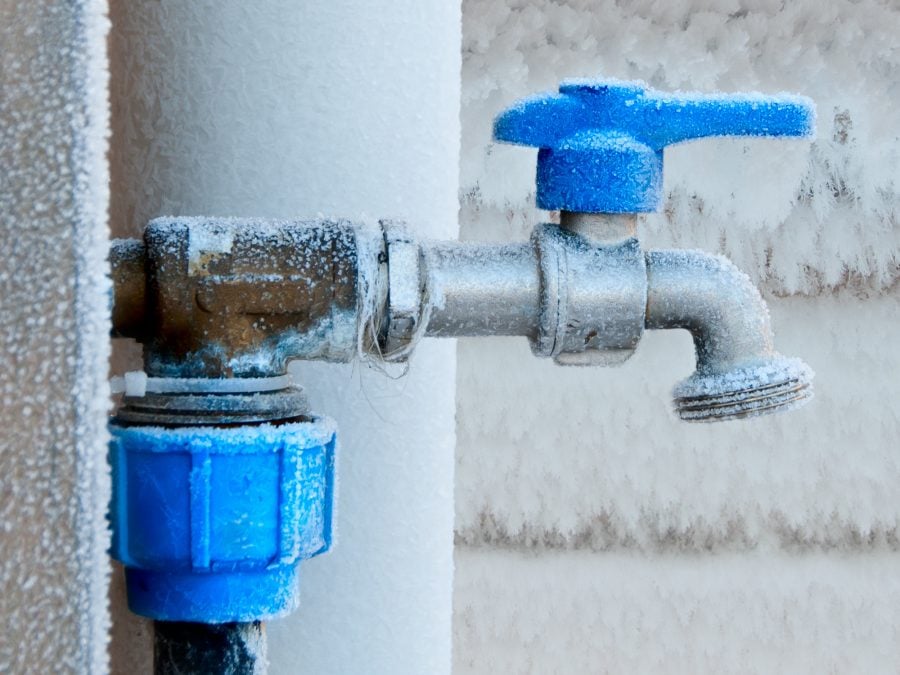Avoid Frozen Plumbing in Winter: Professional Advice
Avoid Frozen Plumbing in Winter: Professional Advice
Blog Article
Almost everyone has got his or her own conception when it comes to How To Avoid Freezing Pipes.

Winter can wreak havoc on your pipes, especially by freezing pipelines. Right here's just how to avoid it from taking place and what to do if it does.
Introduction
As temperature levels decrease, the danger of frozen pipes rises, potentially bring about costly fixings and water damage. Recognizing how to avoid frozen pipelines is important for homeowners in chilly climates.
Comprehending Icy Pipes
What triggers pipelines to freeze?
Pipes freeze when exposed to temperatures listed below 32 ° F (0 ° C) for expanded periods. As water inside the pipes ices up, it increases, taxing the pipe wall surfaces and possibly causing them to rupture.
Dangers and damages
Frozen pipes can lead to water system interruptions, building damage, and costly repairs. Burst pipes can flooding homes and cause comprehensive architectural damage.
Signs of Frozen Pipes
Recognizing frozen pipelines early can prevent them from rupturing.
How to recognize frozen pipes
Search for lowered water circulation from faucets, uncommon odors or noises from pipes, and visible frost on revealed pipes.
Prevention Tips
Protecting susceptible pipelines
Cover pipelines in insulation sleeves or utilize warm tape to shield them from freezing temperature levels. Focus on pipes in unheated or outside locations of the home.
Home heating strategies
Maintain interior spaces adequately heated, especially locations with plumbing. Open up cupboard doors to allow cozy air to flow around pipelines under sinks.
Safeguarding Outdoor Plumbing
Garden hose pipes and outside faucets
Detach and drain pipes garden hose pipes prior to winter. Install frost-proof faucets or cover exterior faucets with protected caps.
What to Do If Your Pipes Freeze
Immediate activities to take
If you presume icy pipelines, keep taps available to eliminate pressure as the ice melts. Use a hairdryer or towels soaked in hot water to thaw pipelines slowly.
Long-Term Solutions
Architectural adjustments
Think about rerouting pipelines away from exterior wall surfaces or unheated areas. Include added insulation to attics, basements, and crawl spaces.
Updating insulation
Invest in high-grade insulation for pipes, attics, and walls. Proper insulation helps keep regular temperatures and reduces the danger of frozen pipes.
Conclusion
Avoiding icy pipes requires aggressive actions and quick responses. By comprehending the causes, indications, and safety nets, property owners can protect their plumbing throughout winter.
6 Proven Ways to Prevent Frozen Pipes and Protect Your Home
Disconnect and Drain Garden Hoses
Before winter arrives, start by disconnecting your garden hoses and draining any remaining water. Close the shut-off valves that supply outdoor hose bibs and leave the outdoor faucet open to allow any residual water to drain. For extra protection, consider using faucet covers throughout the colder months. It’s also important to drain water from any sprinkler supply lines following the manufacturer’s directions.
Insulate Exposed Pipes
Insulating your pipes is an effective way to prevent freezing. Pipe insulation is readily available at home improvement stores and is relatively inexpensive. Pay close attention to pipes in unheated areas such as the attic, basement, crawl spaces, or garage. Apply foam insulation generously to create a buffer against the cold. You can also wrap your pipes in heat tape or thermostat-controlled heat cables for added warmth.
Seal Air Leaks
Inspect your home for any cracks or openings that could let in cold air. Seal any holes around the piping in interior or exterior walls, as well as the sill plates where your home rests on its foundation. Additionally, make sure to keep your garage door closed unless you’re entering or exiting. Leaving it open creates a significant air leak that can lead to frozen pipes.
Allow Warm Air Circulation
During cold snaps, it’s essential to allow warm air to circulate evenly throughout your home. Leave interior doors ajar to promote better airflow. Open kitchen and bathroom cabinets to help distribute heat consistently around the rooms. If you have small children or pets, be sure to remove any household chemicals or potentially harmful cleaners from open cabinets for safety.
Let Faucets Drip
A small trickle of water can make a big difference in preventing ice formation inside your pipes. When temperatures drop significantly, start a drip of water from all faucets served by exposed pipes. This continuous flow helps prevent the water from freezing. Additionally, running a few faucets slightly can relieve pressure inside the pipes, reducing the chances of a rupture if the water inside does freeze.
https://choateshvac.com/6-proven-ways-to-prevent-frozen-pipes-and-protect-your-home/

I stumbled upon that page on How to Prevent Your Pipes From Freezing when surfing around the search engines. Liked our write up? Please quickly share it. Help somebody else check it out. Thank-you for going through it.
Detail Report this page